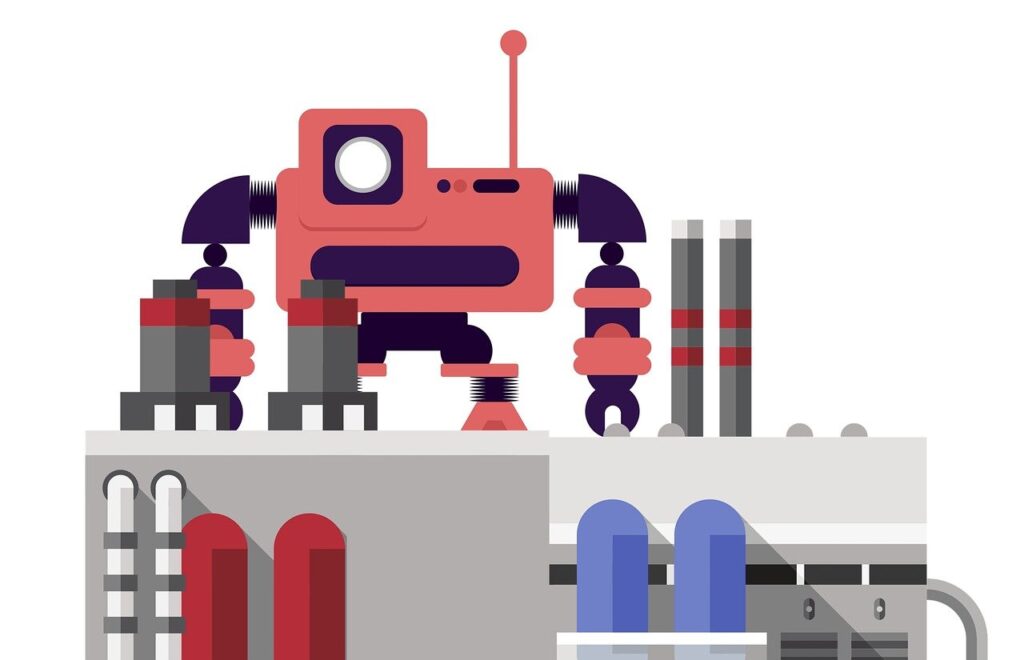In the dynamic landscape of industrial automation, a new player has emerged, poised to redefine the way we perceive human-machine collaboration. Collaborative robots, or cobots, have become integral to modern manufacturing processes, offering a paradigm shift from traditional industrial robotics. Unlike their more imposing counterparts. These Cobots are designed to work alongside human operators. Specifically fostering a synergy that amplifies efficiency and safety on the factory floor.
This article delves into the realm of collaborative robots, unraveling their unique characteristics, practical advantages, and real-world applications. As we navigate the evolving narrative of human-robot partnerships, we’ll explore two compelling examples that showcase how Collaborative Robots are seamlessly integrated into diverse industrial settings. From assembly lines to quality control, these versatile assistants are not just transforming workflows but also ushering in a new era of innovation within the industrial domain. Join us on this exploration of how cobots are revolutionizing the workplace, one collaborative task at a time.
What are Collaborative Robots

Collaborative robots are often referred to as Collaborative Robots. Moreover, a specialized type of robot is designed to work alongside human operators in a shared workspace. Unlike traditional industrial robots that are confined to safety cages due to their sheer power and potential danger to humans. Cobots are built with a focus on safety, adaptability, and ease of use in close collaboration with human workers. Should you be more interested in how the communication works here?
Key characteristics of cobots include
Safety Features
Collaborative robots, or cobots, are at the forefront of ensuring a secure and collaborative working environment. The integration of advanced safety features is a pivotal aspect of their design. Among these features, force and torque sensors are crucial in augmenting safety protocols. These sensors empower Collaborative Robots to detect any unexpected contact with human operators or surrounding objects. In such contact, the cobot can swiftly halt its movements or make immediate adjustments. Therefore mitigating the risk of accidents and ensuring the well-being of human co-workers.
Adaptability
Adaptability stands as a hallmark of cobot design, allowing these robots to seamlessly fit into dynamic industrial landscapes. Cobots are engineered to be flexible and easily programmable, enabling swift deployment and reprogramming for various tasks. This flexibility is a strategic response to the ever-changing production needs within industries. Whether there’s a shift in product lines, assembly requirements, or quality control processes. Cobots can adapt with agility, making them well-suited for environments characterized by evolving demands.
User-Friendly Interfaces
One of the distinguishing features of cobots lies in their user-friendly interfaces. Equipped with intuitive programming interfaces, cobots democratize automation by eliminating the need for advanced technical expertise. Operators, even those without a deep understanding of robotics, can effortlessly program and control cobots for specific tasks. This user-friendly approach not only simplifies the integration of automation into diverse workflows but also expands the accessibility of robotics across a broader spectrum of skill sets.
Physical Collaboration
Unlike their conventional counterparts confined behind safety barriers, cobots are designed to break down physical barriers between humans and robots. This characteristic opens up unprecedented possibilities for physical collaboration in the workspace. Collaborative Robots can work close to human workers, facilitating shared tasks where both humans and cobots contribute their unique strengths. This collaborative approach optimizes efficiency by combining the precision and repeatability of Collaborative Robots with the cognitive and adaptable skills of human operators.
Relative Affordability
The relative affordability of cobots compared to traditional industrial robots positions them as a compelling choice for businesses, particularly small and medium-sized enterprises (SMEs). While the cost of implementing industrial robots can be substantial, cobots offer a cost-effective solution. This affordability lowers the barrier to entry for automation, enabling a broader range of businesses to leverage the benefits of robotics without compromising financial viability.
Payload and Size
Cobots strike a balance between efficiency and size. With a lower payload capacity compared to traditional industrial robots, cobots are designed for tasks involving lighter loads. This makes them well-suited for applications where precision and agility are paramount. Additionally, their more compact form factor addresses spatial constraints, making cobots ideal for environments where space is a limiting factor. This combination of reduced payload and compact size enhances their versatility across a range of industries and workspaces.
Challenges and Future Trends

As industries embrace the promising potential of collaborative robots (cobots), it’s essential to acknowledge the challenges that accompany their integration and consider the emerging trends shaping their future.
Challenges
- Complex Integration:
- The integration of cobots into existing workflows can pose challenges, requiring careful planning and potential adjustments to accommodate their collaborative nature.
- Skill Gaps:
- While cobots feature user-friendly interfaces, there may still be a need for upskilling the workforce to operate and maintain these advanced systems effectively.
- Security Concerns:
- As cobots become more connected in smart manufacturing environments, addressing cybersecurity concerns becomes paramount to safeguard sensitive data and prevent unauthorized access.
- Cost of Adoption:
- Despite being more cost-effective than traditional robots, the initial investment in cobots can still be a barrier for some businesses, particularly small enterprises with limited financial resources.
Future Trends
- Advanced AI Integration:
- The future holds the integration of more advanced artificial intelligence (AI) capabilities into cobots, enabling them to learn from experiences, make decisions, and adapt to dynamic production environments.
- Human-Robot Collaboration Enhancements:
- Continuous improvements in sensors and actuators will enhance the ability of cobots to collaborate seamlessly with humans, leading to even more sophisticated and intricate joint tasks.
- Edge Computing for Real-Time Processing:
- The integration of edge computing with cobots will enable real-time data processing, reducing latency and enhancing the responsiveness of these robots in time-sensitive applications.
- Enhanced Mobility:
- Future cobots may see improvements in mobility, allowing them to navigate and collaborate in a broader range of environments beyond fixed production lines.
- Interoperability Standards:
- The development and adoption of industry-wide interoperability standards will facilitate the seamless integration of cobots with other automation systems and technologies.
Cobot`s for the good?
In the dynamic realm of industrial automation, collaborative robots, or cobots, stand as pioneers, reshaping the landscape of human-machine collaboration. Their integration into modern manufacturing processes signifies a transformative departure from conventional industrial robotics, embracing a future where efficiency and safety coalesce on the factory floor.
This exploration into the world of cobots has unveiled their unique attributes and practical advantages, unraveling the fabric of their seamless integration into diverse industrial settings. From the intricacies of safety features, which elevate human-robot collaboration to unprecedented levels. Forming the adaptability that allows cobots to dance effortlessly amid ever-changing production needs.


